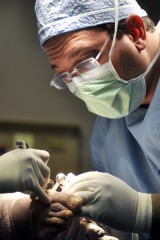If you are struggling with lower back pain that radiates down your leg, you might have hit the internet searching for answers, only to find the terms “sciatica” and “herniated disc” discussed frequently. This is because both conditions can cause debilitating back...
You open your eyes, stretch, and sit up, ready to start the day. But the moment your feet hit the floor, a sharp or aching pain shoots through your heels, arches, or the balls of your feet. Morning should feel refreshing, yet instead, you find yourself hobbling to the...
Are you a fitness enthusiast or a dedicated athlete who has suddenly been sidelined by a nagging, persistent pain in your calf and ankle? That sharp or aching sensation that flares up during or after activity could be the result of Achilles tendonitis. The Achilles...
Bunions: Causes, Symptoms and Solutions

Bunions cause a lot of pain and stiffness, make it difficult to walk, impair the function of the foot, and make wearing shoes nearly impossible.
Fortunately, there are simple methods to treat bunions and relieve pain. Keep reading for more information on how you can get pain relief from your bunion.
What is a bunion?
A bunion is a deformity of the first metatarsophalangeal (MTP) joint at the base of the big toe. A bunion forms when the first metatarsal bone of the foot turns outward and the big toe points inward. This causes the joint to protrude rather than line up with the toe and look like a bump on the foot.
We exert a lot of force on the joints of our feet during daily activity, and when more force than usual is put on our joints, it can cause instability that leads to deformities. Consistent pressure on the MTP joint over a long period of time can cause bunions.
Causes
There are some foot types that are more prone to developing bunions. Bunions are not hereditary, but foot types are passed on from one generation to another. Feet that function abnormally, are flat, or have low arches are more prone to developing bunions.
People who are on their feet all day long, day after day, place a lot of stress on their feet.
Wearing shoes that don’t fit appropriately, especially when the toes are crammed in without any room to move, can also cause bunions. Bunions are more prevalent in women, due to uncomfortable shoes such as high heels that women wear on a daily basis.
Symptoms
Most people who develop bunions can typically identify them when they start to form. The following symptoms are signs that you have a bunion:
- A firm bump on the outside at the foot at the base where the big toe starts to form
- Pain and restricted motion of the big toe
- Redness, swelling, or pain at the MTP joint
Treatment
For mild pain, there are ways to treat your bunion at home for relief. Apply an over-the-counter bunion pad from the pharmacy around the protruding area and avoid high heel shoes to prevent more pain. If your bunion becomes swollen, apply ice packs to reduce inflammation.
If your bunion continues to be painful, visit a physician for professional treatment. The treatment will depend on your foot and the severity of the bunion. Your physician may suggest the following treatments:
- Padding and Taping – Padding the bunion reduces pain and taping keeps the foot in a normal position, minimizing stress on the area.
- Medication – Over-the-counter anti-inflammatory medication and cortisone injections are often recommended to reduce pain and swelling
- Orthotics – Orthotics are shoe inserts worn to reduce pain caused by the bunion and to prevent the symptoms from getting worse.
- Surgery – If these non-operative methods have not been effective in reducing pain, your physician may suggest surgery. To repair the toe joint, the surgeon will remove the enlarged portion of the bone and restore the normal alignment of the join.
If you’re dealing with a painful bunion, these methods can help. Be sure to speak with a physician if you are unable to find relief with home treatments. If you’re undergoing bunion surgery, it’s important to have a reliable surgeon. Download our e-book, How to Choose an Orthopaedic Surgeon, for more information on how to find the right surgeon for you.


